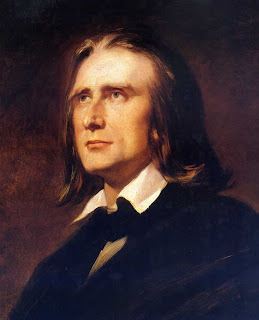
Sir Donald Tovey was a musicologist, conductor, pianist, composer and music reviewer. His seven-volume series in musical analysis called appropriately enough
Essays In Musical Analysis were originally program notes written for symphony orchestra concerts (plus one volume published posthumously that covers chamber music) and they cover many of the familiar classical pieces in the orchestral repertoire and some that are not so familiar. There purpose as described by Tovey was to act as a guide for the listener to lead to greater enjoyment of classical music. These essays were first published in the 1930's and may seem a little old fashioned in style, but for the classical music lover who wishes to learn more about the art and technical side of orchestral music, they are invaluable. Tovey does have a knack of being able to speak to the beginning listener (although the ability to read music is helpful) as well as the trained musician. All seven volumes of the
Essays are on my book shelf and I refer to them often. More about Tovey later.
 |
| Donald Tovey |
Ernö Dohnányi was a Hungarian pianist, conductor and composer. He was a brilliant pianist and in his early years was compared to
Franz Liszt. He made his debut as a pianist in Berlin in 1897 to wide acclaim. He went on to tour Germany and Europe, as well as visiting London and the United States. There is still a controversy concerning whether Dohnanyi was a Nazi sympathizer in Hungary during World War II. Some say he did all he could to protect his Jewish friends, others say he was instrumental in purging Jews from orchestras and Conservatories in Hungary. He moved to Austria in 1944 after the Nazis invaded Hungary, which gave cause for some to accuse of him of Nazi sympathizing. After the war he moved to Argentina for political reasons as he suffered harassment for his alleged conduct against Jews during the war. He eventually immigrated to the United States and taught at Florida State University. He went to New York City in 1960 for some recording sessions and died there.
Variations On A Nursery Tune was written in 1914 and is subtitled:
For the enjoyment of humorous people and for the annoyance of others. The tune used is
Twinkle, Twinkle Little Star, also known in French as
Ah, vous dirai-je, Maman. It is for written for piano and orchestra and consists of Introduction, Theme, 12 variations, and Coda, all played without a break.
Introduzione, maestoso - Donald Tovey wrote an essay about this work, and he referred to the heavy and Wagnerian introduction as a "Symphony in woe minor", an apt enough description as the sheer weight of the dominating brass and timpani rumbling gives a feeling of doom and gloom. There is a hint at what is to come by a plodding motive in quarter notes played by the horns of the theme. After the orchestra is done blaring, a solemn march tempo begins. The music dies down, and the proceedings are halted by the way of a loud thump produced by the orchestra.
Tema, allegro - The piano enters and punches out the theme one-finger style, accompanied by pizzicato strings and bassoon.
Variation 1 - The piano gallops along playing the tune to a light accompaniment and glissandos from the harp.
Variation 2 - The horns blare out the first phrase of the theme, the piano and woodwinds answer. The dialogue continues and then breaks off into the next variation.
Variation 3 - The music is in the style of and quotes phrases of
Brahms 2nd Piano Concerto.
Variation 4 - Woodwinds are the stars in this variation with the bassoons and flutes alternating in a dialogue accompanied by the piano.
Variation 5 - Dohnanyi imitates a music box very effectively with the piano, bells and harp.
Variation 6 - Tovey was quite taken with this variation as he called it, "an etude for pianoforte and wind instruments without parallel in classical or modern orchestration." The piano and woodwinds have a lively discussion with rapid exchanges in music that is on the verge of falling apart in its hectic give and take.
Variation 7 - A grand, somewhat bloated parody of a waltz.
Variation 8 - A march in a minor key with the persistent rhythm of the timpani throughout.
Variation 9 - A scherzo starring the bassoon, xylophone, and contra-bassoon.
Variation 10 - The theme becomes the continuing bass of a passacaglia. The full orchestra plays the theme, solo instruments comment as the music slowly builds and the ominous music of the introduction makes another appearance. The music builds in intensity and finally erupts in a climax that bursts into the major mode.
Variation 11 - The theme is transformed into a chorale.
Variation 12 - Ascending scales lead to the fugato that scurries through the theme as it bounces from one instrument group to the other while the piano runs along side. The piano thunders out broken octaves, and the orchestra has a sudden outburst and a short pause. The bare theme appears played by woodwinds and piano. The woodwinds make their final comment on the theme with the contra-bassoon having the final word before the piano scampers to the end and the final repetition of a fragment of the theme as the piano plays a glissando.






























